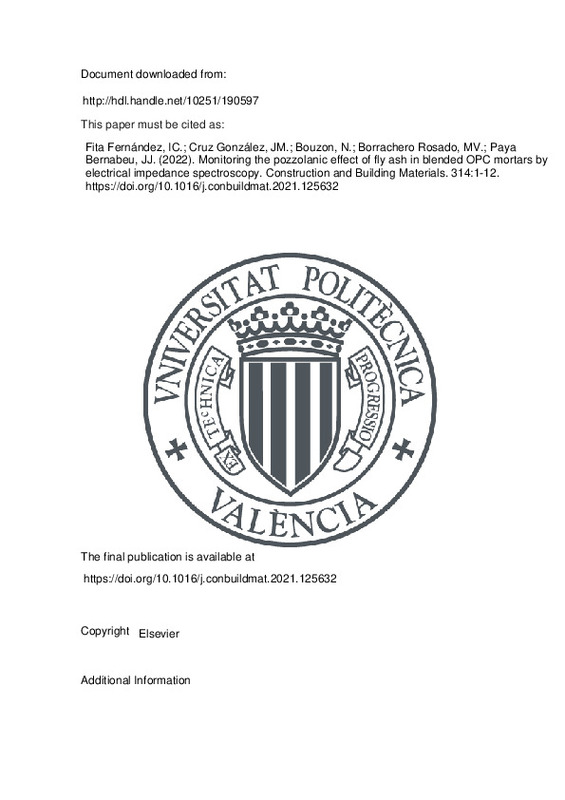JavaScript is disabled for your browser. Some features of this site may not work without it.
Buscar en RiuNet
Listar
Mi cuenta
Estadísticas
Ayuda RiuNet
Admin. UPV
Monitoring the pozzolanic effect of fly ash in blended OPC mortars by electrical impedance spectroscopy
Mostrar el registro completo del ítem
Fita Fernández, IC.; Cruz González, JM.; Bouzon, N.; Borrachero Rosado, MV.; Paya Bernabeu, JJ. (2022). Monitoring the pozzolanic effect of fly ash in blended OPC mortars by electrical impedance spectroscopy. Construction and Building Materials. 314:1-12. https://doi.org/10.1016/j.conbuildmat.2021.125632
Por favor, use este identificador para citar o enlazar este ítem: http://hdl.handle.net/10251/190597
Ficheros en el ítem
Metadatos del ítem
| Título: | Monitoring the pozzolanic effect of fly ash in blended OPC mortars by electrical impedance spectroscopy | |
| Autor: | Bouzon, N. | |
| Entidad UPV: |
|
|
| Fecha difusión: |
|
|
| Resumen: |
[EN] Fly ash (FA) is a pozzolanic material widely used to replace ordinary Portland cement (OPC) in mortars and concretes. The main purpose of this replacement is to improve the durability of these materials in a sustainable ...[+]
|
|
| Palabras clave: |
|
|
| Derechos de uso: | Reconocimiento - No comercial - Sin obra derivada (by-nc-nd) | |
| Fuente: |
|
|
| DOI: |
|
|
| Editorial: |
|
|
| Versión del editor: | https://doi.org/10.1016/j.conbuildmat.2021.125632 | |
| Tipo: |
|







![[Cerrado]](/themes/UPV/images/candado.png)


